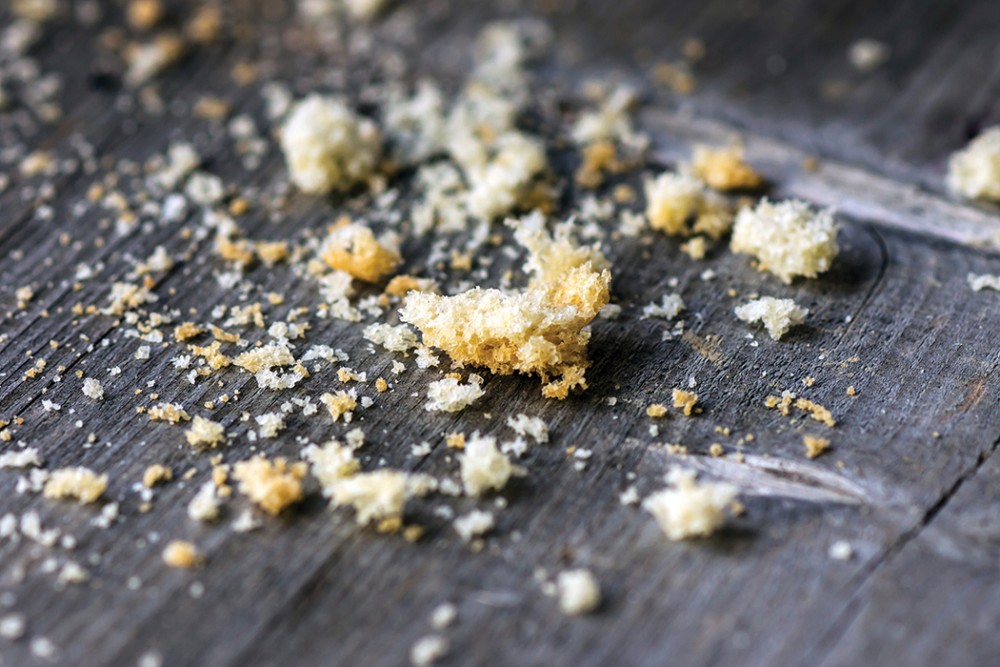Holy crumbs for a holy world
As the children make their way out the door, trails of leftover communion bread go with them.

My favorite part of a communion service comes at the end, after the music and prayers and preaching, when worshipers wander around the sanctuary, filling the space with conversation. After the recession to the narthex I make my way back to the front, weaving in and out of congregants standing in the aisles.
At the altar I find crumpled and stained cloth napkins, silver dishes covered in crumbs, a little puddle of juice at the bottom of a cup. But I’m here for the bread, the remnants of those round loaves that were ripped in pieces and gently placed into people’s hands. I gather up what is left, cradling it in the crook of my arm. These are the leftovers, the communion bread that didn’t get eaten during the great feast.
I’m a guest here, a Mennonite pastor working at a Methodist church. Over time I’ve learned the methods for how to care for this sacrament, the house rules—although some of these details spiral into more questions. On Sunday mornings I like to think of the consecration echoing to the sandwiches in the shop next door. I wonder if those holy words get into the muffin sitting on my desk. And when does the Holy Spirit evaporate from the elements? At the end of the day? Is it a calendar day, or by dusk are sacred mysteries fading away with the last light?




